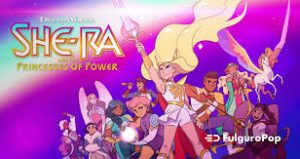
Each academic year ends with the theses defense by the students of Master 2 Brands and Youth Products of the CEPE – IAE of the University of Poitiers. This year 2019-20 yet again, the students have chosen rich and fascinating thesis subjects, and the jury honored some excellent academic works. The topics addressed in the research papers were quite varied and audacious. As one would naturally expect, they were inspired by sectors related to children’s consumption: Cartoons, toy shops, video games, babycare products, amusement parks, social networks, and luxury fashion brands for children, to name the few.
In this article, we will focus on one of the theses around the theme of animated movies or cartoons. The comics’ capital city of Angouleme, where CEPE is located, undoubtedly influences its students’ choice of the research subject. Thanks to an entire ecosystem dedicated to the image (higher education schools, industries, the residence of more than 250 cartoonists), fostered by the organization of the « Festival International de la Bande dessinée » each January and the multiple exhibitions offered by the « Cité de la Bande dessinée et de l’image, » Angouleme has established itself as the world capital of the 9th art.
The thesis that we will explore here is titled « Queer representations in western media: The perception of LGBTQ+ characters in animated Television series » – by Emeline GIFFARD.
Emeline’s research paper aimed to understand how people perceived LGBTQ+ characters in animated TV series and, more precisely, if their presence would impact the show’s overall appreciation. For this purpose, she chose a comprehensive approach by leading individual interviews with young adults and observations conducted on social media Reddit. This research highlighted the positive reception of this kind of character in animated TV series and media in general. However, because of pinkwashing and queerbaiting issues, a certain doubt persists regarding intentions behind such inclusions. The author summed up by recommending that queer characters need to be thought as characters before tools for communicating strategies, and as such, should be carefully crafted to provide meaningful plotlines to the audience
